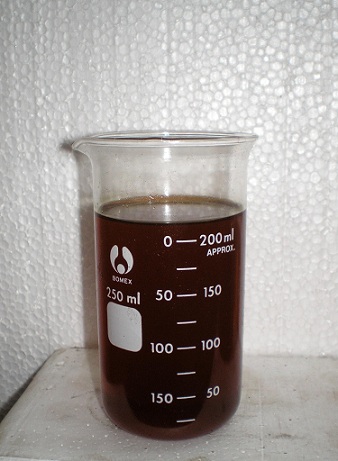Waste oil is considered to be hazardous waste since such substances are difficult to render harmless by oxidation, biodestruction or chemical reactions. In a majority of cases, servicing of petroleum oils is followed by the process of thermal destruction and oxidation. That is the reason for the accumulation of asphalts, resins, soot, acids, salts, surface-active substances and metal particles.
Waste oil burning therefore, can lead to the environmental contamination with harmful substances that include heavy metals, soot, sulfur dioxide and unstable chemical compounds.
In many countries, waste material burning is possible and legal only after all toxic substances have been removed. Today, waste oils are managed by chemical, physical and physicochemical methods.
A long term objective is the removal of contaminants and products of aging from working oil products. First, it is necessary to remove all solid particles and water. With this purpose, the oil product is let to settle down, then it is filtered or exposed to centrifugal purification.
The second stage of waste oil purification is evaporation and vacuum distillation.
Chemical methods allow for high-quality oil restoration, though this method requires complicated and expensive equipment. Regeneration makes it possible to obtain oils that have the same characteristics as that of the original oil product. Given that the volume of the restored oil is approximately 80 to 90% of the original volume, regeneration is a very cost effective means to cleaning and restoring oil. Waste oils are collected separately from other wastes and placed into separate containers.
Also, it is necessary to prevent the penetration of corrosive and toxic substances such as paints, fats, organic solvents, chemical compounds and contaminants into waste plastic lubricants. Unwanted substances may also include oil, petroleum, kerosene, diesel fuel and dark fuel oil.
Taking everything into consideration, it should be mentioned that in the years to come the following aspects will be major considerations in the improvement of environmental safety:
- development and introduction of technological processes and equipment with minimal impact on nature and natural resources;
- creation of reasonable ways of collection, storage and decontamination of toxic wastes;
- application of non-waste and low-waste technologies;
- integrated use of material resources and energy;
- efficient use of natural fuel resources;
- waste management; and
- recycling and regeneration of waste;
Modern regeneration processes are considered to be one of the most long range ways of waste oil management. Being able to restore the characteristics of waste material to the like-new condition, saving money and fuel and energy resources and reducing the environmental loads will greatly benefit society. In practice, industry people use purification and regeneration plants that are described below.

